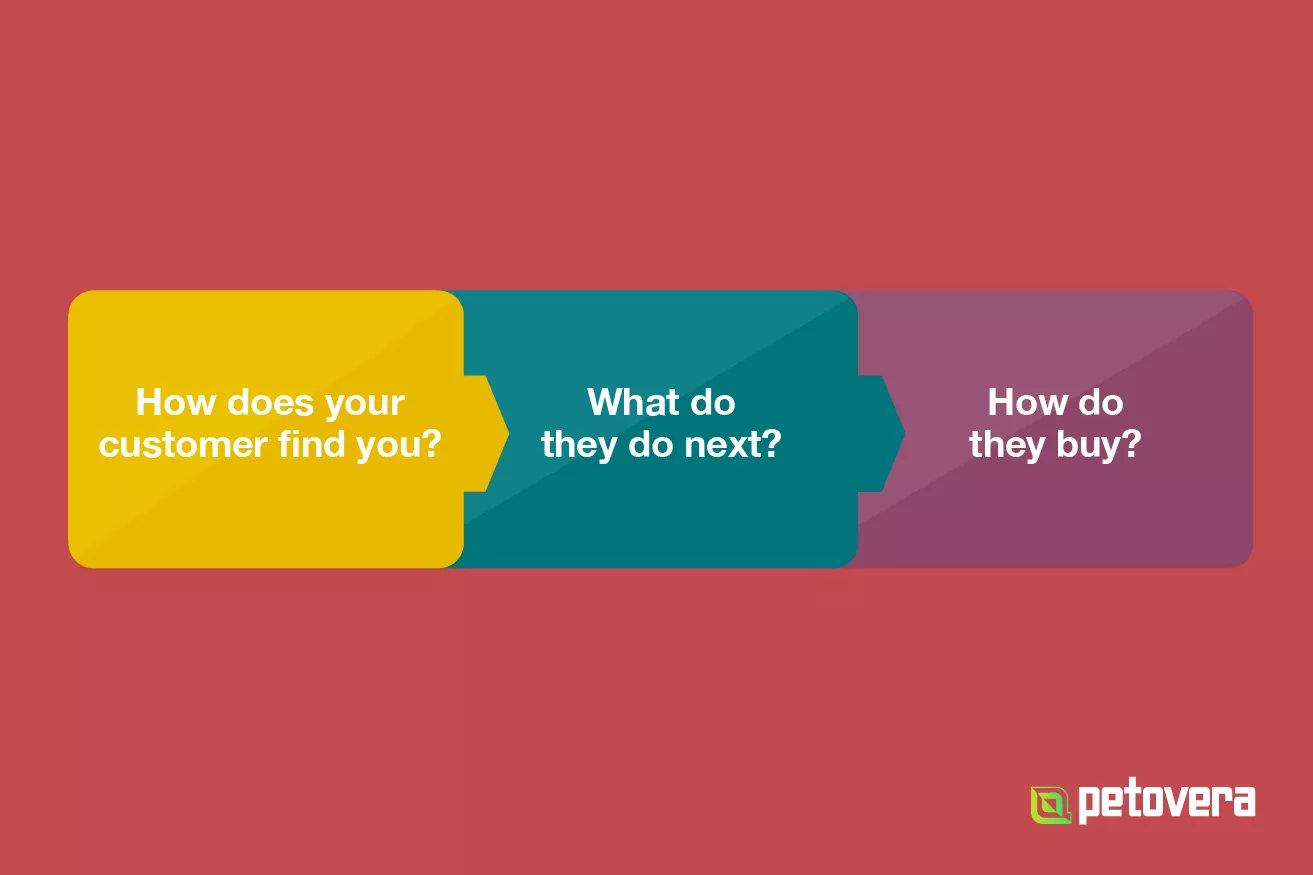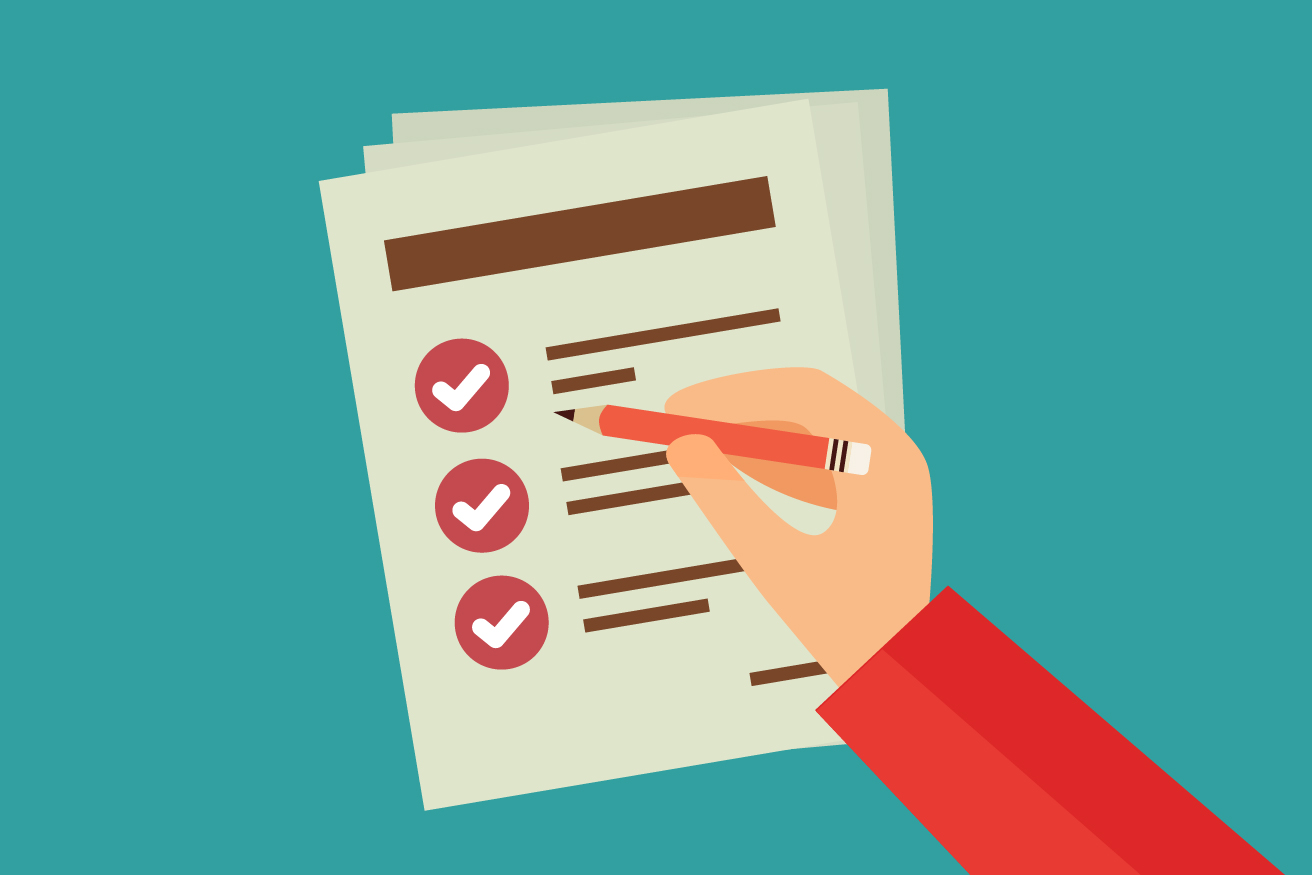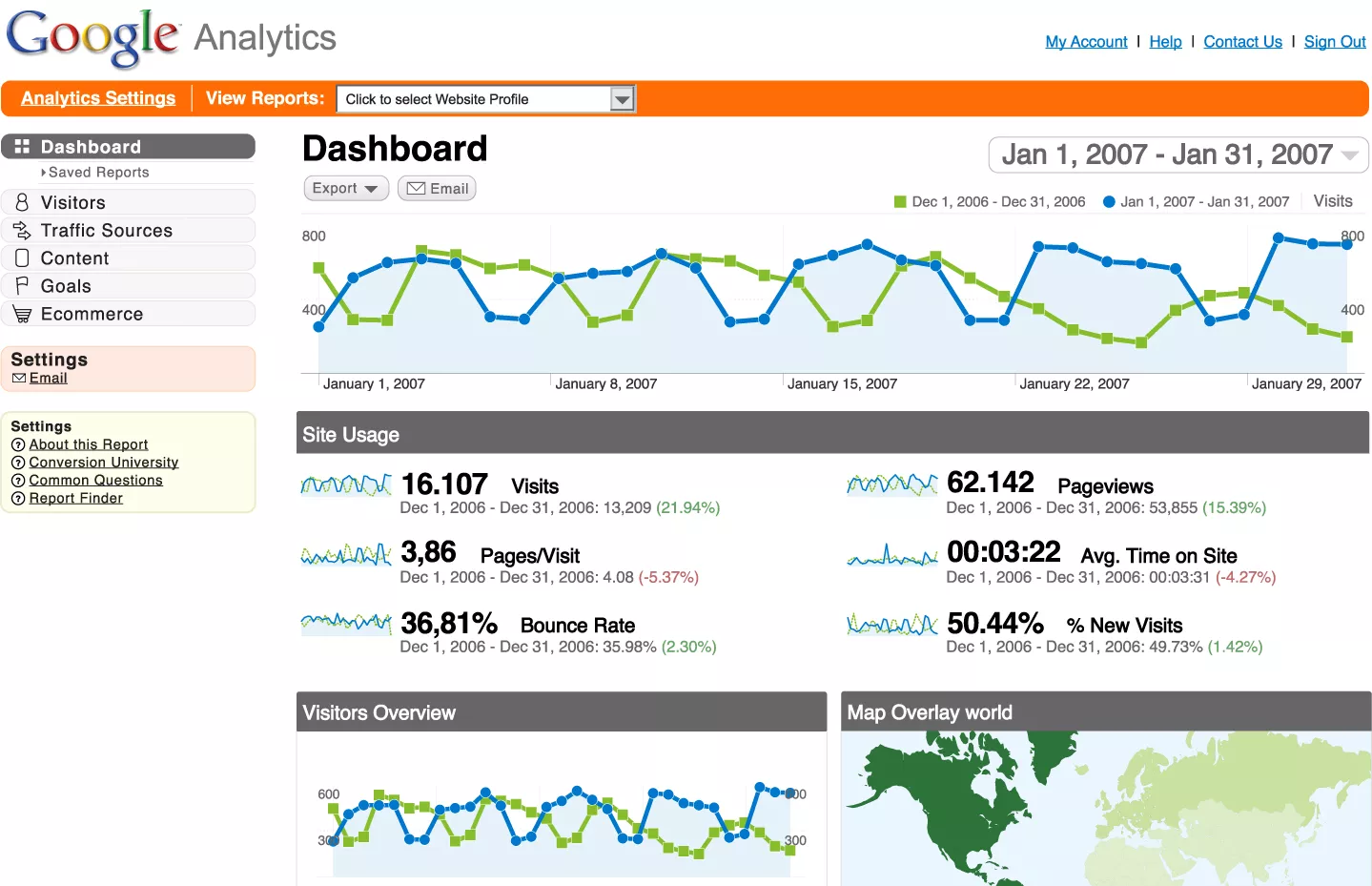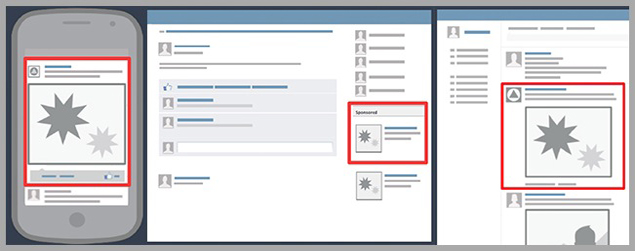5 Easy Steps to Create a Small Business Sales Funnel That Converts

Summers in Houston are hot as hell.
Just ask Kelly Cammack of Apollo Answering Service.
At 25, she was in charge of her family’s 40-year-old company. With a hunk of outdated routers and messaging systems, it was in serious decay.
Keeping the business going was hard. But getting clients?
That was exhausting.
She had to spend hours writing custom proposals for every lead—at below-market prices.
Then she would drive across town in the hot sun, present it in person, and cross her fingers that they’d close the sale.
She thought, “There has to be another way.”
Fast-forward 18 months.
Apollo Answering Service was on track to be a million-dollar business.
What changed?
The long answer is what the rest of this article will reveal.
The short answer: she built a simple sales funnel—and from it, the website conversions for Apollo grew 400% which, in turn, doubled their sales.
In this article, I’ll show you how you can take the first steps to do the same for your business.
I know from working with hundreds of small businesses year after year: running a small business day-to-day isn’t the hard part.
What’s difficult is transitioning from working in your business to working on it.
The good news is you can create a machine that will work to find leads, convert them, and keep your business growing without requiring your hands-on effort every step of the way.
In fact, Growbo does it for dozens of customers every day.
Kelly is just one example.
In this article, I will walk you through the first 5 steps to creating your own sales funnel.
What is a Small Business Sales Funnel?

First, I want you to think about the process new customers go through when signing up for your service or buying your product.
From the moment they first hear about you, to the moment they inquire, to the consultation, to their buying decision.
Try to picture it as steps in a flow chart.
Can you visualize it?
Now ask yourself:
- How do I entice my customers to buy my service?
- What must happen before my customers decide to buy?
Now that you’re thinking about it, there’s probably a few steps, right?
Every step in the process prior to a customer’s purchase is a “stage” in your sales funnel.
So, even if you think you don’t have a sales funnel right now, you do.
In a nutshell, a sales funnel is defined as a series of steps designed to guide visitors towards a buying decision. The steps are composed of marketing assets that do the work of selling, like landing pages and emails.
Sales funnels have been around forever, because even without the internet, businesses still had to figure out consistent ways to attract buyers.
Since the age of online marketing, they’ve just become easier to build and manage.
Now, with the vast number of tools on the internet, small businesses—like yours—can measure and optimize the buying process—or vastly shorten the sales cycle.
This is good news for you as a small business owner—you now have a powerful marketing tool (used by the likes of Airbnb, Starbucks, and McDonald’s, to name a few) at your fingertips.
You just need to know how to use it.
Don’t worry, we’ll start from the beginning.
Analyze Your Current Sales Funnel
Before we dive into the 5 steps to building your sales funnel, take a few minutes to break down the “buying stages” of your business.
I’ll wait.
Fill in the blanks here:

This is important.
Doing this will equip you with a basic picture of how your sales process looks from start to finish.
Once you have this in front of you, it will be a lot easier to see where the ‘gaps’ are in your process.
Gaps where you are losing customers. Gaps where you could be getting more customers.
Is your sales funnel falling victim to the biggest gap of all?
Are you following up—or are you leaving money on the table?
The follow-up is one of the key pillars of a successful sales funnel—more on that to come.
But now, let’s turn the rough sketch of your sales funnel into a high-powered sales engine.
Step 1—Strategize (What is the End Goal of Your Funnel?)
Every effective funnel has an end goal.
When building your sales funnel, this is a pivotal decision: define your end goal.
It doesn’t have to be a sale, either.
Maybe you run a consulting business, and you want prospects to ‘book a call’ or ‘schedule a consult.’
Or maybe you run a service business like a martial arts school, and you want prospects’ emails.
Whatever the goal is, define it.
Then underline it. And bold it. Your end goal is that important to this process.
That brings to mind an interesting quote by Scott Adams that is important to reiterate here:
“Focus on creating systems, not goals. Goals are for ‘losers’ because you are literally failing 24/7 until the moment you reach the goal. . . . Systems, on the other hand, are strategically designed to output a consistent result—achieving an objective in a predictable and repeatable way.”
So while your end goal is paramount in designing the system, you’re not chasing that goal alone.
You’re focusing on creating a system.
Your goal will be the ‘north star’ in building the perfect sales funnel, because every future step you implement will direct traffic toward this end goal.
So before you continue down the list in planning the rest of your sales funnel, determine and write down the end-result you want to accomplish with your sales funnel.
Step 2—Plan Your Basic Funnel Structure (Or Tweak What’s There)

This is when you start laying the groundwork.
In the same way you mapped out your current sales process, now map out the basic structure of your future sales funnel.
Don’t worry—we’ll lead you through what that means.
For some guidance, take a look at our master sales funnel template.
Start at the beginning—with your website.
Look at the structure of your existing website for leaks:
- What does the homepage accomplish?
- Where could it be losing customers?
- Where does it lead prospects?
(And if you’re still unsure how to identify leaks, try doing some user testing with a tool like userinput.io)
As the first step in your online sales funnel, is your website designed to convert customers to the next stage in their decision?
Now, plan the middle stages—the acquisition, the onboarding.
Analyze how one page flows into the next, if at all.
Follow your Call To Action (CTA) buttons—if you have any—and see where they lead. Do those transitions make sense?
Now, reflect on your end goal from the last section.
That is your “conversion goal.”
You’re starting to learn some fancy marketing words now, huh?
This second step in building your sales funnel—planning what it looks like and how you’ll convert customers at every stage—isn’t an easy feat to do alone.
There are a lot of things you’ll need to do: copywriting, list building, follow-up emails, ads, retargeting ads, building CTA buttons—to name a few.
Which leads us to the next point.
Step 3—Implement Highest Priority Items First (Follow ‘the 3 F’s’: Foundation, Follow-up, Fuel)

You should now have a basic sales funnel plan and can start putting the pieces together.
At Growbo, we have a strategy we call ‘the 3 F’s’—foundation, follow-up, and fuel.
Understanding the 3 F’s will help you focus on implementing the most important pieces of your funnel first.
To get results fast, you need to install the highest priority items first, according to what category they fall under:
- Foundation—make sure all pages of your website have the right content, CTAs, and logical flow to convert prospects to the next step.
- Follow-Up—after you have a strong foundation, use it to build your follow-up strategy (re-targeting, email autoresponder sequences, etc.).
- Fuel—after you have the foundation and the follow-up items implemented, you need the fuel to put in your engine that will make it all ‘go’—paid advertising or inbound traffic.
And here’s a few tools to save you time for each stage:
- Wordpress—a great platform for creating a website if you don’t have one yet, because it has wide support among developers and makes it easy to manage pages and blog content.
- Leadpages—helps you quickly set up designed-to-convert landing pages by filling in the blanks.
- Active Campaign—great for the follow-up stage with email marketing tools, marketing automation tactics, and a built-in sales & CRM system.
Feeling good? You’re almost there :-)
Now, let’s talk about how to track your results.
Step 4—Track and Get Feedback

Once you have the basic structure of your funnel implemented, you can’t jump straight to pumping in the fuel.
You still need to set up tracking.
If you don’t, you’ll end up with a lot of wasted ad dollars and no feedback for your hard work.
You want to make sure you’re tracking the numbers so that down the line you can analyze then fine-tune the sales engine you’re building. Here’s how:
- Install your Google Analytics Funnel Goal—you’ll get a full visual of your funnel and a sense of conversion rates from every angle.
- Get feedback consistently as you make changes—this is the big one. If you don’t get the advice of experts, you are just guessing. At Growbo, one of the things we specialize in is giving strategic feedback and reviews so you can hit your funnel goals faster.
Getting particular feedback can be the fastest way to make profitable “connections” to fill gaps in your sales funnel.
It can save you from some costly mistakes. For example, finding out, after already spending a few hundred dollars on ads, that changing the CTA button’s color to yellow would substantially drive up your conversion rate.
Just make sure, before you turn on the traffic, you have a solid foundation and all your tracking is in place.
Step 5—Turn on the Traffic (Inbound Traffic or Paid Ads)

Now that your engine is built, there’s only one thing left to do: fuel up!
You need to get traffic so that you can convert it. This next step is about getting eyes on your website.
To get traffic to your sales funnel, there are two paths you can turn down:
- Paid Advertising: this includes Pay-Per-Click advertising, display advertising, or Facebook Ads. Facebook advertising is a common choice. While this will get you leads quicker, it will cost more in the end.
- Content Marketing: this means publishing interesting content (through a blog) to direct more traffic to your website. This will pay off more in the long run, but will take longer to build.
Using either of these these options will work to drive your sales engine and propel you forward.
But, as I said in step 4, whichever way you choose to attract traffic, first make sure you have tracking in place so that you can measure it.
Lastly, Never Stop Following the Numbers
The trick is to analyze the collected data and capitalize on its evidence.
Use the numbers like a compass.
Remember those gaps we discussed earlier? The data will always reveal where they are.
It will also give you opportunities to improve your funnel. A quick look at your business’s Google Analytics page can be a lightbulb moment.
But don’t get down if the data doesn’t look great in the first few weeks.
Massive growth won’t happen overnight. It rarely ever does.
Building a well-running (and well-oiled) sales machine is like building a Rolls-Royce.
And, while Kelly’s funnel is now a high-converting one, it took over one year to get it there.
One big thing to understand about this process: your long-term sales funnel strategy is to continually plug smaller leaks and test ways to convert more customers.
You’ll add components to your sales funnel, subtract moves that don’t convert, and continually revamp your funnel to get better results.
Concluding Thoughts
So, yes. Creating a sales funnel really is that simple.
Follow this guide, step-by-step, and you’ll see results.
It’s good to keep in mind that while this article is just 5 steps, each one of these steps could mean weeks of work.
It’s not ‘easy’ to get it up and running, but it is the most reliable long term business strategy you can create.
So there’s one final question I want to address for you.
Perhaps it’s the most obvious one—how much will it cost to build a sales funnel from start to finish?
How Much Does It Cost To Create A Sales Funnel?

If you’re struggling to figure it out on your own, hiring a professional may be something you’re considering.
The great thing about hiring a professional to create your sales funnel is that you can quickly bypass the learning curve.
You can get expert advice on the first day and save a tremendous amount of time.
But building a high converting sales funnel means hiring programmers, copywriters, designers, and strategists.
So it goes without saying, it can be pricey.
Expensive marketing consultants will quote you around $30,000 to set yours up. In fact, many of our customers have been quoted that price.
Even though a sales funnel can convert new leads and be highly profitable once it’s put into place—leading to a high return on investment—many small businesses just can’t afford that.
We, at Growbo, understand.
That’s why we offer a library of actionable resources for small business owners to build their own sales funnels.
We also offer our own sales funnel service.
We have a whole team of funnel strategists, designers, copywriters, and developers working to perfect your funnel.
You need a reliable partner who can get the work done and guide you in the right direction. That’s where we come in.
If you are a small business owner and you’re considering setting up a sales funnel, you can watch this quick video about our service.
All of our pricing structures are small business friendly and start at $199/month.
Two final questions for you: if you’re a small business owner, do you currently have a sales funnel? If you are working to build yours today, what’s your biggest challenge?
I’d love to read your answers in the comments.
Stay Focused, Keep Hustlin’
—Matt













